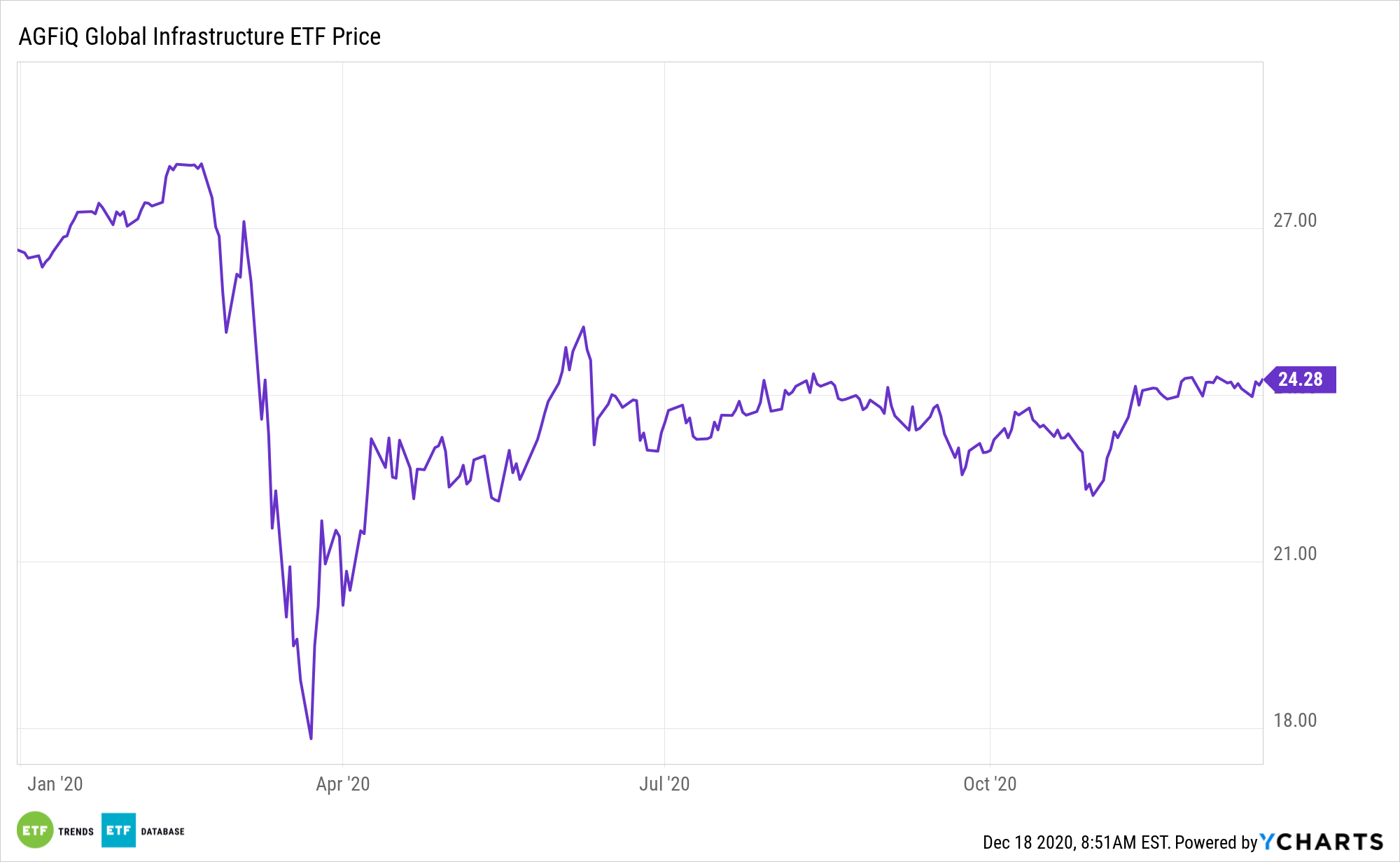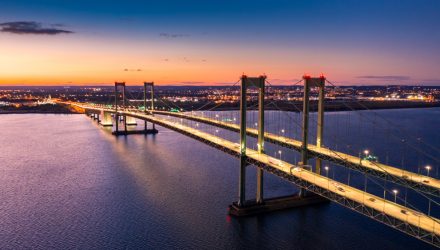Infrastructure was a focal point of the 2020 presidential campaign and the AGFiQ Global Infrastructure ETF (GLIF) is worth revisiting because infrastructure could be used by politicians to rejuvenate the U.S. economy following the coronavirus pandemic.
The AGFiQ Global Infrastructure ETF uses a multi-factor investment process to seek long-term capital appreciation by investing primarily in global equity securities in the infrastructure industry.
Investors who want to access global infrastructure investments through a liquid vehicle may consider GLIF as an alternative to being forced into the long lock-up periods and high initial investments associated with direct infrastructure exposure.
“Infrastructure investment offers one way to stimulate the economy that continues to elicit bipartisan support,” according to the Brookings Institution. “Upgrading roads, ports, pipes, and other facilities can boost capital spending and create jobs now, plus support long-lasting career pathways and durable economic growth. These improvements also stretch across all types of regions, from urban to suburban to rural communities.”
The GLIF ETF and America’s Infrastructure
Infrastructure exposure can also help protect against long-term inflationary risks since most infrastructure operators pass through the cost increases of inflation to users per long-term contracts that typically underpin the infrastructure business models.
With infrastructure, GLIF is looking for areas with a quality bend, exhibiting lower volatility. Traditionally, a lot of infrastructure has been built around components of the Dow Jones. However, the ability to widen has allowed for enhanced diversification of the portfolio, which is a primary goal. Using the quantitative background enables AGFiQ to cast a wider net.

“But to truly improve the country’s infrastructure and help the most vulnerable households, federal leaders cannot simply throw more money at shiny new projects. Instead, they must invest with purpose and undo the harms of our legacy infrastructure systems,” according to Brookings. “Too often, households have struggled to afford water and energy bills, to physically reach jobs, or to plug into the internet. This is no accident: Systematic disinvestment, environmental injustices, and racial and economic exclusion have led to infrastructure systems that have posed barriers to opportunity for decades. COVID-19 has only brightened the spotlight on these legacy failures.”
Good news for GLIF: With Capitol Hill looking to unleash a massive wave of stimulus onto the U.S. economy in an effort save jobs numbers from sliding, infrastructure could be in style as the coronavirus situation hopefully eases off soon.
For more alternative investing ideas, visit our Alternatives Channel.
The opinions and forecasts expressed herein are solely those of Tom Lydon, and may not actually come to pass. Information on this site should not be used or construed as an offer to sell, a solicitation of an offer to buy, or a recommendation for any product.








